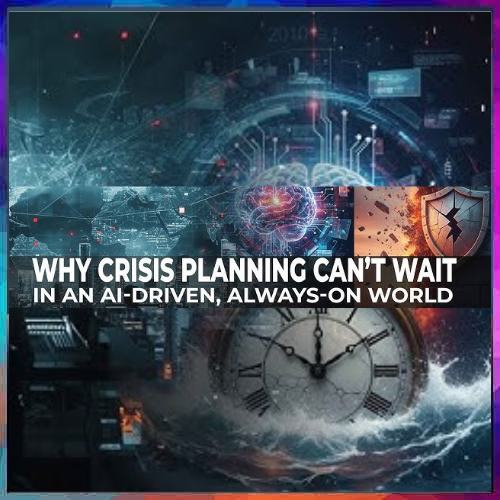
Antoinette Schoar, a professor of entrepreneurial finance at the MIT Sloan School of Management, showed several logos of some 1,800 so-called fintech startups that have launched in the past few years.
Professionals from the finance and technology sectors convened in New York City on 16 September to learn about how recent technology innovations are transforming banking and the stock market as well as credit cards, loans, and other financial products and services. The theme of the event, hosted by MIT Sloan, was “FinTech (Financial Technology) and the Disruption of Finance.” The speakers made it clear that machine learning and other new technologies are certain to bring big changes to the financial industry.
PERSONALIZED PRODUCTS AND SERVICES
Traditional financial institutions increased their partnerships with startup companies last year to help them innovate; otherwise they risked being left behind. In her “Mastering FinTech for a Changing World” presentation, Antoinette Schoar, a professor of entrepreneurial finance at the MIT Sloan School of Management, showed logos of some 1,800 so-called fintech startups that have launched in the past few years to fill gaps left by traditional institutions. Banks and credit card companies are going to have to adopt emerging technologies, like big data tools, to keep up with the startups, Schoar says.
Big data could be used to help tailor credit cards to individuals, for example. Currently, banks and credit card companies send offers to people based on their education level. Some offer cards with a 0 percent interest rate to those with a high school education but charge them a high fee for late payments, for example. Customers who have a master’s degree or Ph.D. get offered perks, like earning airline miles with purchases. Some credit card companies are going to rely on data analysis of recent purchases and overall finances to better understand customers’ spending habits and recommend credit cards based on that information, Schoar says. Services such as Mint, an online and mobile personal finance manager, already recommend cards based on their users’ information.
Big data also can be used to generate real-time credit scores. Currently, credit scores, which measure the risk associated with lending money to a consumer, can be based on factors such as late payments, including ones made years ago. Real-time scores put more emphasis on recent activities-which could make it easier for people to get loans or increase their lines of credit.
ROBO-ADVISORS
Would you trust software to handle your investments? Robo-advisor services are on the rise. Philip Riese, president of Riese & Others, a venture capital firm that deals with fintech startups, says his company is attacking the problem of “lazy money.”
Many people keep their money in savings accounts, which are yielding less than 1 percent interest annually. Some are paying a high interest rate on a loan and not bothering to switch to one with a lower rate. One of Riese’s startups, Betterment, uses machine learning to automatically move users’ money around based on the best rates available at any given time. Betterment also can help with investments. If you have funds in a mutual fund retirement account that is yielding below-average returns, for example, Betterment can automatically move the money to a mutual fund that has been getting higher returns. To make such decisions, the service takes into consideration the investor’s age, income, and risk tolerance.
Riese invests in startups that offer “massive disruption of consumer expectations,” he says—similar to how many people react the first time they use Uber and realize it’s a better way to get around.
BlackRock, the world’s largest asset manager, has funded the startup FutureAdvisor. After you sync all your financial accounts to the service, the robo-advisor provides free investment advice and a plan personalized to your financial goals. Ben Golub, chief risk officer at BlackRock, says that because of such services, stockbrokers will have to prove their merit to earn their fees. Surveys have shown that people prefer robo-advisors to people because they are more convenient, and their processes are transparent. Millennials especially seem to trust technology more than people, even with their money, Golub says.
However, Andrew W. Lo, professor of finance at MIT Sloan, disagrees. Customers still want to talk to real people when they lose money, he says, adding that he doesn’t believe stockbrokers are going away anytime soon. Brokers, though, can benefit from technology, he says, such as using analytics to help them make investment decisions.
But first, he says, “data needs to represent how people behave, not how we think they ought to behave.” He calls this concept “artificial humanity,” not “artificial intelligence.” For example, analytics might better predict when people will “freak out” and take their money out of the market based on previous investment behaviors—which could help brokers decide when to buy and when to sell.
“We need better technologies to match human behaviors and emotions,” Lo says.

In the panel "Fintech: Beyond the Startup," leaders in the space discuss how new ventures are reinventing financial services for customers.
BANKS AND THE BLOCKCHAIN
In the words of speaker Simon Johnson, a professor of global economics and management at MIT Sloan: “Blockchain is big, and it really demands your attention.” Blockchain technology supports digital currency systems, like Bitcoin. It allows for transparent and decentralized operations, meaning everyone using the system can see what’s going on.
Its very nature is counter to how banks operate, because their systems are private and centralized. And with blockchain technology, banks could be held accountable for any wrongdoing, since customers could easily view all activities on the platform.
Although banks have been resistant to the technology’s adoption, it will save them a lot of money in the long run because it can automate much of their manual work and add a layer of security, says Brad Peterson, the CIO of NASDAQ.
The technology is just as disruptive as automated teller machines were decades ago, Peterson says, adding: “Before then, you had to plan your weekends based on the money you had in your wallet.”
For customers, blockchain technology provides users with a digital signature and secure identification. Moreover, audits of transactions would be unnecessary, because the system provides a record of every payment made.
Peterson predicts a high-tech company will emerge to fill the need for the technology as it becomes more in demand—akin to a “Google for blockchain,” he says.
“The first time I looked at the Internet in 1993 and saw a video of a cat giving advice, I thought this technology is not going to have much impact,” Johnson says. “That’s where blockchain is today.”
See What’s Next in Tech With the Fast Forward Newsletter
Tweets From @varindiamag
Nothing to see here - yet
When they Tweet, their Tweets will show up here.





























